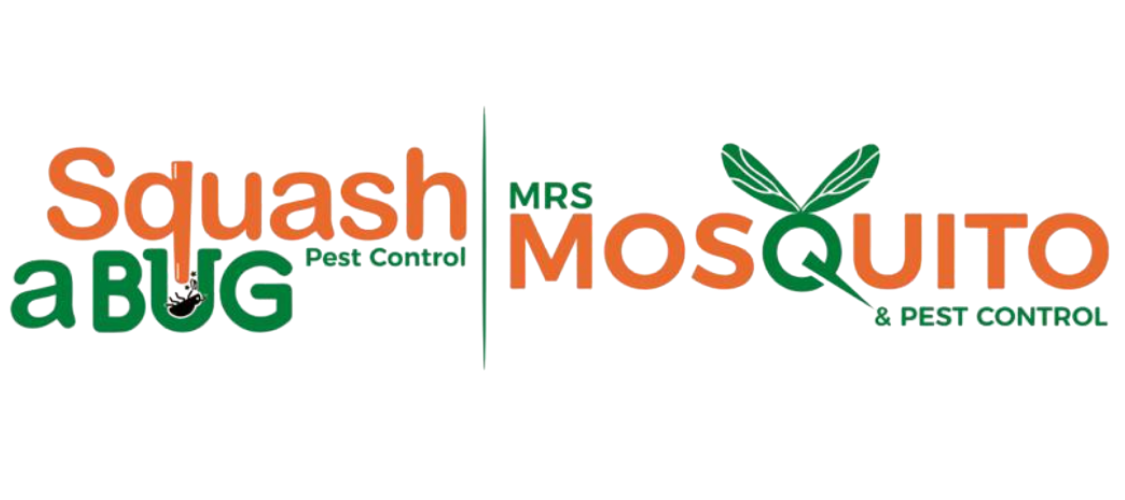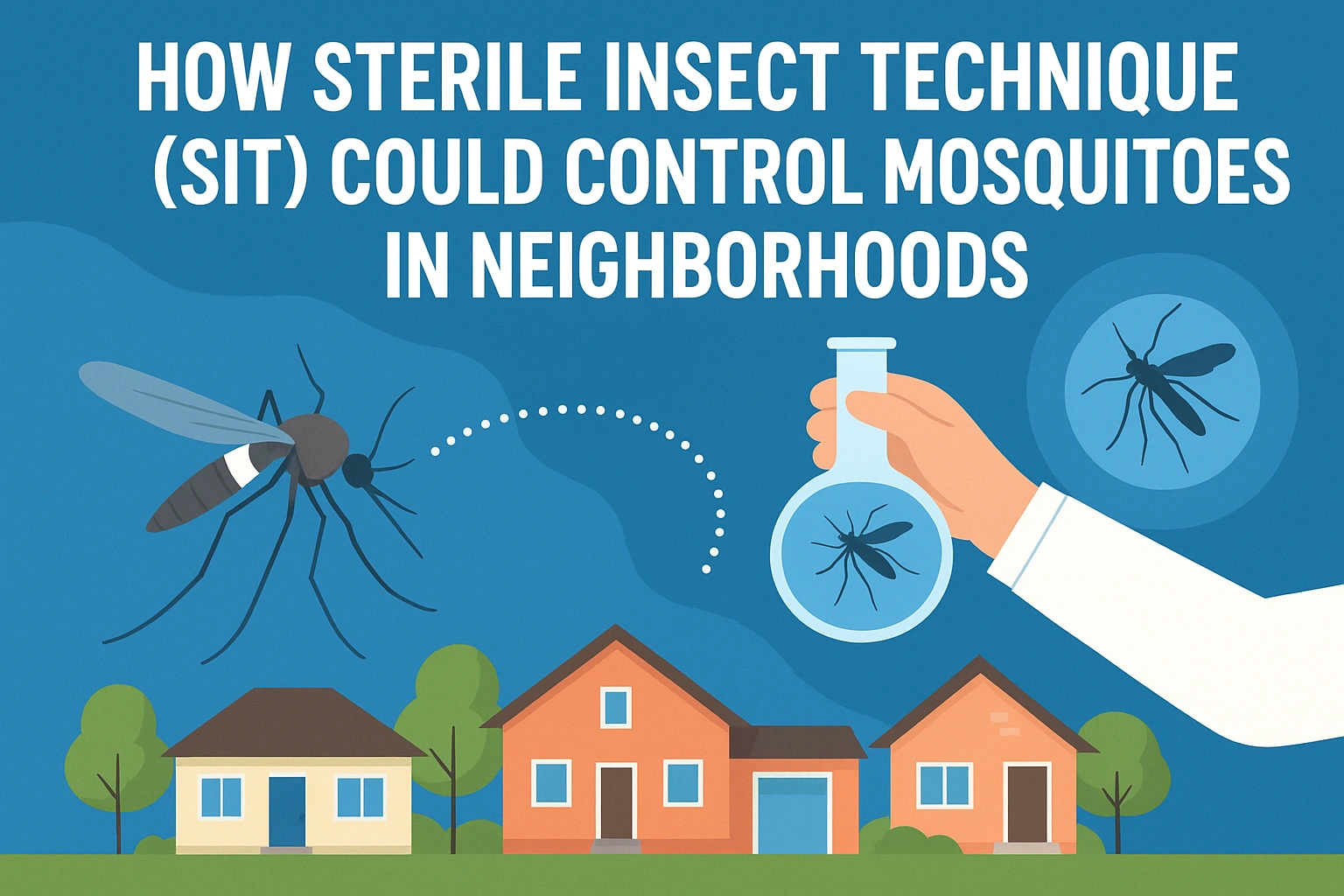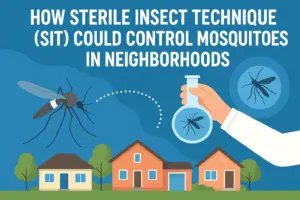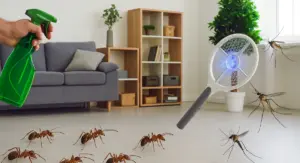Mosquitoes are more than just a nuisance. In many communities, especially during the warmer months, they become a real health concern. With diseases like West Nile virus, dengue, and Zika increasingly becoming neighborhood threats, finding smarter ways to control mosquito populations has never been more important. One method gaining attention in the U.S. is the sterile insect technique for mosquitoes. It’s a natural, science-backed approach that could reshape how neighborhoods manage pests without depending solely on sprays or chemicals.
What Is the Sterile Insect Technique?
The sterile insect technique, or SIT, is a form of biological mosquito control. It’s a straightforward concept backed by years of research. Scientists breed large numbers of male mosquitoes in laboratories. These males are then sterilized using radiation or other approved processes that render them unable to reproduce.
Once released into the environment, these sterile males compete with wild males to mate with females. When females mate with sterile males, no offspring are produced. Over time, this reduces the mosquito population in a natural way, without altering ecosystems.
How Does SIT Pest Control Work in Real Neighborhoods?
For SIT to be effective, it’s usually applied in a targeted and consistent manner. Neighborhoods are mapped, mosquito breeding hotspots identified, and waves of sterile males are released over several weeks or months. The more successful matings these sterile males achieve, the fewer new mosquitoes appear in the next generation.
This method has already seen success in parts of the U.S. and internationally. It’s especially useful for controlling Aedes aegypti, the species known to transmit Zika and dengue, which often breeds in small backyard containers and shaded areas.
Why Choose SIT Over Traditional Mosquito Control?
Many residents are cautious about chemical sprays and foggers, especially those with kids, pets, or gardens. Here’s where sterile insect technique mosquitoes provide an alternative:
- Eco-friendly: SIT doesn’t introduce toxins into the environment.
- Targeted: Only the mosquito species intended is affected, leaving beneficial insects untouched.
- Safe for people and pets: Since sterile males don’t bite or transmit disease, there’s no risk involved in their release.
- No pesticide resistance: Over time, pests can grow resistant to chemicals. That’s not the case here.
This approach is part of a broader trend toward safer, smarter pest control strategies, similar to how pest-free hospitality tips are helping businesses reduce chemical use without sacrificing cleanliness.
Where Does SIT Fit in With Community Mosquito Plans?
Most neighborhoods already rely on mosquito sprays, larvicides, or draining standing water. SIT isn’t designed to replace all of that—it works best as part of an integrated pest management plan.
When used alongside public awareness, backyard cleanups, and targeted spraying, SIT becomes even more effective. Think of it as a support system for community mosquito control, especially during peak summer breeding months.
This is similar in concept to how pest control calendars help homeowners stay ahead of seasonal pest problems. With the right timing and planning, SIT can be timed to reduce mosquito populations just before the season spikes.
Challenges of SIT Implementation
While the concept is simple, executing SIT in a real-world setting involves planning and precision. Some of the challenges include:
- Cost and scale: Breeding and sterilizing mosquitoes in large quantities takes resources.
- Consistency: The method requires ongoing releases until population levels drop significantly.
- Community participation: Residents must still take action to remove standing water and avoid creating new breeding grounds.
Yet, despite these hurdles, SIT remains one of the most promising long-term mosquito control strategies, especially in areas where pesticide use is limited or where mosquitoes have become resistant to traditional treatments.
Future of Biological Mosquito Control in the U.S.
With increasing focus on environmental health, biological mosquito control methods like SIT are gaining momentum. Cities and counties are exploring this technology as part of broader sustainability and public health goals. Even pest control companies are beginning to integrate biological methods with their service offerings, much like how residential mosquito control services are evolving beyond just spraying.
Moreover, research is expanding. New variations of SIT are being tested, including using genetic modification to enhance results or combining SIT with mosquito traps for more precision. In time, SIT could become a household term for neighborhoods looking for natural pest solutions.
Frequently Asked Questions
1. Will I see fewer mosquitoes right after SIT starts?
Not instantly. SIT is a gradual method. You may begin noticing changes in mosquito activity after several weeks or cycles of sterile releases.
2. Can I do SIT in my backyard?
Not individually. SIT is best applied across entire neighborhoods or communities due to mosquito travel distances. It requires coordination with pest control experts or local agencies.
3. Are there other insects affected?
No. SIT targets specific mosquito species. It doesn’t harm bees, butterflies, or other insects in your yard.
4. Can mosquitoes become resistant to SIT like they do with sprays?
No. Because SIT involves sterilization, not chemicals, there’s no resistance issue. Mosquitoes can’t adapt to not being able to reproduce.
5. Is SIT already in use in the U.S.?
Yes, test programs have run in places like Florida and California. Results have been promising, and more cities are exploring it as a future pest control tool.
Final Thoughts
The sterile insect technique isn’t a silver bullet, but it offers a smart, natural way to tip the balance against mosquitoes. In neighborhoods where summer evenings are interrupted by buzzing clouds and itchy bites, SIT can offer long-term relief. With increasing awareness, better coordination, and partnerships with pest control experts, this method can easily complement traditional practices and lead to cleaner, safer yards.
If your community is already familiar with managing other seasonal pests, like Acworth’s biggest summer threats, adopting SIT might feel like a logical next step in smarter pest control.
Understanding where mosquitoes breed, how they spread, and what tools are available to fight them is part of responsible neighborhood living. And as more people look for eco-conscious pest control strategies, SIT is likely to become part of the conversation, and part of the solution.
Take the Next Step Toward Mosquito-Free Living
The sterile insect technique (SIT) is paving the way for safer, greener mosquito control in neighborhoods across the U.S. While it may not work as a stand-alone solution, pairing SIT with expert pest management can significantly reduce mosquito populations and protect your family from harmful diseases.
At Squash A Bug, we stay ahead of the curve by keeping up with the latest eco-friendly pest control innovations. Whether it’s mosquitoes, ants, or seasonal household pests, our team helps you reclaim your yard without overreliance on harsh chemicals.
Ready to explore smarter mosquito control for your home or community? Contact Squash A Bug today at www.squashabug.com to learn how our services can make your outdoor spaces safer and more enjoyable.








